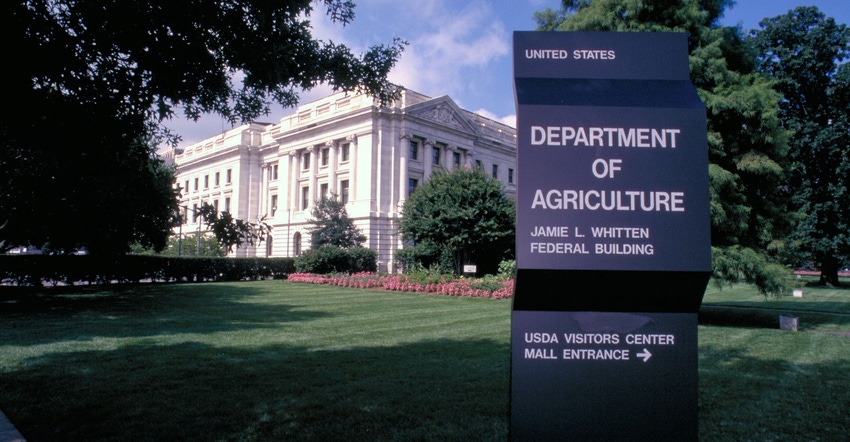
“It’s often said paradigm shifts start with big ideas,” Secretary of Agriculture Tom Vilsack shared with members of the House Appropriations Subcommittee on Agriculture in a hearing April 14.
In his first appearance before the subcommittee, Vilsack outlined his four “big ideas” that will help shape and direct the budget requests and legislation sought by the President and his entire administration.
Climate focus: Vilsack’s first “big idea” that he discussed was the notion that climate change is not only an “existential threat, but also an extraordinary opportunity to bring profitability back to farming and rural America.” He says that begins with the process of how Congress acts on President Biden’s infrastructure plan - American Jobs Plan - that calls for resources to support climate smart agriculture, biobased manufacturing and clean air conversions.
Consistent with that vision is also an increase in funding for USDA’s climate hubs launched under Vilsack’s previous tenure. These climate hubs pull together the resource base and knowledge from different agencies across the government to provide a quality assessment of risks associated with the climate.
He hopes additional funds can be allocated to ramp up the capacity to provide the knowledge and information necessary for farmers to better understand climate mitigation and adaptation strategies and reduce the risks of climate without suffering further decline in production. “I think farmers really need information, knowledge and expertise,” Vilsack says, adding additional funds dedicated to these climate hubs can do exactly that.
Vilsack says there is an opportunity for farmers to embrace climate smart practices. “With the right policies and right incentives, I think we’ll see wide adoption of climate smart agriculture, with methane capture and reuse, and biobased manufacturing. That is the transformative idea within climate. That’s the opportunity to completely change the economy in rural America.”
Equitable government assistance: The last time Vilsack served as agriculture secretary, he implemented court ordered settlements to Black farmers under the Pigford lawsuit. He says the agency now will look beyond compensating individuals who have individually suffered discrimination, and instead look at how to root out systemic barriers that created significant gaps over time.
USDA also plans to recognize the cumulative long-term impact of past discrimination, which has been started partly through the $5 billion for loan forgiveness and outreach through the American Rescue Plan COVID-package approved shortly after the new president and Congress came into office.
Improving resiliency: Vilsack says the pandemic revealed the need for greater resiliency in the system.
Vilsack says, “As important as productivity is in agriculture, so is profitability and resiliency.”
The American Rescue Plan allocated some funds to invest in strengthening the supply chain and helping diversify the chain with smaller or medium-sized processors. “This budget increases resources to help small processing facilities create more competition, more open markets and more opportunity for producers to profit.”
Nutrition insecurity: The secretary has spoken extensively in recent months about the need to refocus efforts on not only addressing food insecurity, but also nutrition insecurity. He cited that 18.5% of children today are obese and nearly 70% of adults are as well.
“It’s important and necessary to focus not only on food insecurity but also on nutrition,” Vilsack says.
Currently $160 billion is spent on diabetes treatment for those on Medicare and Medicaid, an amount more than the entire budget of USDA. Vilsack says if you cut that by half or more, that’s significant.
“If you have better nutrition, diabetes goes down,” Vilsack says. “It’s cost effective for us to invest particularly in our children to have great habits as they go through life.”
Deepening trade presence: Although Vilsack did not mention trade as one of his opening “big ideas” he did talk about the importance of deepening the U.S. presence in markets beyond just China. He relates that during his past four years as the president and CEO of the U.S. Dairy Export Council he learned that firsthand.
He says Southeast Asia is ripe for expansion, as well as opportunities in the Middle East. Longer-term, the U.S. export strategy has to include Africa as one half of all the anticipated world’s increase in population will occur in that continent. Additional opportunities also exist in strengthening relationships in our own hemisphere.
Deepening the U.S. presence includes having people on the ground who understand and appreciate that market and can provide market insight to tailor programs, policies and products to meet market demand. It also requires partnerships and the ability for U.S. commodity groups to partner with universities and innovators in those markets to create new products to use U.S. ingredients.
And promotion of U.S. products creates opportunities of continually telling the American story of safety, stability and the capacity to be innovative.
“If you deepen the presence in additional markets, you will see less reliance on China over time and a more diverse, balanced and more resilient system,” Vilsack says.
About the Author(s)
You May Also Like






